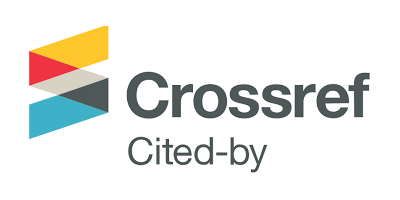Settlement Of Uncertified Land Disputes Through Customary Law (Research Study at Kampung Berhut Kecamatan Terangun Kabupaten Gayo Lues)
DOI:
https://doi.org/10.29103/micolls.v2i.104Keywords:
Settlement, Land Dispute, Customary LawAbstract
Article 19 paragraph (2) letter c of the UUPA states that certificates have many functions for their owners. The main and foremost function of the certificate is as a strong evidence. However, the problem of uncertified land often occurs in areas so that land disputes occur, one of which is at Kampung Berhut Kecamatan Terangun Kabupaten Gayo Lues. The purpose of this study is to find out and explain the process of resolving land disputes that are not certified through customary law at Kampung Berhut Kecamatan Terangun Kabupaten Gayo Lues, the obstacles faced and the legal consequences of resolving uncertified land disputes through customary law at Kampung Berhut Kecamatan Terangun Kabupaten Gayo Lues. This type of research is empirical juridical with a case approach. Sources of data used are primary data in the form of interviews with respondents and informants. Based on the research results it is known that; The process of resolving land disputes that are not certified through customary law at Kampung Berhut Kecamatan Terangun Kabupaten Gayo Lues, is that the Village Customary Court first asks the disputing parties to submit problems that become conflicts by providing existing evidence. The dispute between the two parties was resolved peacefully and the decision relied more on the nature of kinship and the statements of witnesses as evidence. Constraints faced in resolving uncertified land disputes through customary law are that the disputed land does not have a certificate, it is difficult to obtain accurate data, there is no clear sign as a land area limit, demands without clear evidence of ownership so that when During the deliberation, there was a cross of opinion between the disputing parties. The legal consequences of resolving land disputes that are not certified through customary law are for parties whose land area exceeds the original limit must return the part of land that does not belong to them to the rightful owner, land owners can make sales and purchases to third parties without any obstacles, land that is not clearly the boundaries become clear so that they can register the land to get a certificate and the disputing parties must obey and participate in implementing the decisions of the Village Customary Court from the results of joint deliberation. It is recommended to the Village Customary Court to be able to open the mindset of the disputing parties regarding peace efforts and various legal aspects as well as its scope.
References
Prasetyo Aryo Dewandaru, Nanik Tri Hastuti, dan Fifiana Wisnaeni, “Penyelesaian Sengketa Tanah Terhadap Sertifikat Ganda di Badan Pertanahan Nasional”, Jurnal Notarius, ISSN:2086-1702 , Vol. 13 No. 1, 2020, pp. 156.
Bernhard Limbong, Hukum Agraria Nasional, Margaretha Pustaka, Jakarta, 2012, pp. 347.
Bernhard Limbong, Hukum Agraria Nasional, Margaretha Pustaka, Jakarta, 2012, pp. 348.
Boedi Harsono, Sejarah Pembentukan Undang-Undang Pokok Agraria, Isi dan Pelaksanaannya, Djambatan, Jakarta, 2008, pp. 72.
Mulyadi dan Satino, “Penyelesaian Sengketa Kepemilikan Tanah Bersertifikat Ganda”, Jurnal Yuridis, ISSN: 2598-5906, Vol. 6 No. 1, Juni 2019, pp. 151.
Bernad Limbong, Bernhard Limbong, Hukum Agraria Nasional, Margaretha Pustaka, Jakarta, 2012, pp. 55.
Nur Anshari, “Kewenangan Dinas Pertanahan Aceh Dalam Penerapan UU No. 11 Tahun 2006 tentang Pemerintah Aceh”, Jurnal Hukum, 2020, pp. 153.
Sulaiman, “Budaya Hukum Masyarakat Aceh Dalam Perjanjian Jual-Beli”, Al-Risalah: Forum Kajian Hukum dan Sosial Kemasyarakatan, ISSN: 2540-9522, Vol. 17, No. 1, Juni 2017, pp. 12.
Nelson Bilung, “Peranan Tokoh Adat Dalam Penyelesaian Sengketa Tanah Ulayat di Desa Long Temuyat Kecamatan Kayan Hulu Kabupaten Malinau Provinsi Kalimantan Utara,” Journal Ilmu Pemerintahan, ISSN 2477-2631, Vol. 8 No. 4, 2020, pp. 16.”
Fauza Andriyadi, “Reposisi Majelis Adat Aceh Dalam Tata Pemerintahan Aceh Pasca Qanun No. 10 Tahun 2008”, Jurnal Agama dan Hak Azazi Manusia, Vol.5, No.1, November 2015, pp. 126.
Mahdi, “Eksistensi Peradilan Adat Aceh”, Jurnal Studia Islamika, STAIN Malikussaleh, Lhokseumawe, 2011, pp. 3.
Mustafa Husin, “Implementasi Nomor 9 Tahun 2008 Tentang Pembinaan Kehidupan Adat dan Adat Istiadat Dan Qanun Nomor 10 Tahun 2008 Tentang Lembaga Adat”, Jurnal:Hukum Adat, Universitas Teuku Umar, Meulaboh, 2014, pp. 2.”
Muhammad Umar, Peradaban Aceh (Tamadun) I, Buboen Jaya, Banda Aceh, 2006, pp. 83.
R. Subekti, Pokok-Pokok Hukum Perdata, Intermasa, Jakarta, 2003, pp. 185.
Downloads
Published
Issue
Section
License
Copyright (c) 2022 Andika Andika, Sulaiman Sulaiman, Manfarisyah Manfarisyah

This work is licensed under a Creative Commons Attribution-ShareAlike 4.0 International License.
Authors retain the copyright and grant the proceeding the right of first publication. This work is licensed under a Creative Commons Attribution-ShareAlike 4.0 that allows others to share the work with an acknowledgement of the Creative Commons Attribution-ShareAlike 4.0 that allows others to share work with an acknowledgement of the works authorship and initial publication in this proceeding.
All articles in this proceeding may be disseminated by listing valid sources, and the article's title should not be omitted. The content of the article is liable to the author.
Authors are able to enter into separate, additional contractual arrangements for the non-exclusive distribution of the proceeding's published version of the work (e.g., post it to an institutional repository or publish it in a book), with an acknowledgement of its initial publication in this proceeding.
Authors are permitted and encouraged to post their work online (e.g., in institutional repositories or on their website) before and during the submission process, as it can lead to productive exchanges and earlier and greater citation of published work.
In the dissemination of articles, the author must declare the Proceedings of Malikussaleh International Conference on Law, Legal Studies and Social Science (MICoLLS) as the first party to publish the article.






